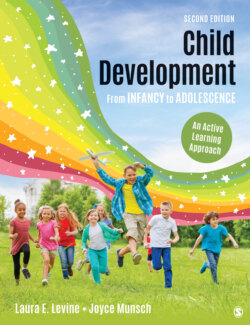Читать книгу Child Development From Infancy to Adolescence - Laura E. Levine - Страница 137
Developmental Theory in a Cultural Context
ОглавлениеAlthough some of the theories we have described take cultural differences into account, all were developed by European or American theorists and most are based on research with Western, middle-class families (Kärtner, 2015). As we said in Chapter 1, if we assume all societies must conform to Western values, we forget that different ideas and behaviors may be more adaptive for children growing up in different contexts and environments. To understand the diversity of development, we must examine the indigenous theories, or ethnotheories, of child development that guide the way children are raised in a variety of cultures. In Chapter 1, you were given an example of how cultural values affect the specific parenting practice of feeding an infant. In this chapter, we focus on how cultural values shape theories of child development.
T/F #6
A good theory should be universal, applying to all children in all situations. False
We saw that Erikson’s theory focused on the development of autonomy and self-determination of the individual. However, developmental theory in some cultures focuses more on the integration of the individual into the social group. For example, Nsamenang and Lo-oh (2010) explain that in sub-Saharan Africa, the overarching theory of development “positions the child not in his or her sovereignty but as socially integrated in a human community” (p. 386). This means that children are seen primarily as participants in their cultural communities rather than as autonomous individuals. To illustrate this cultural difference, compare Erikson’s stages described earlier in this chapter to the stages of development described by Nsamenang (2015) for African culture as shown in Table 2.2.
Table 2.2
Erikson’s theory focuses on the development of the individual and Nsamenang’s theory focuses on social connection throughout development. How are these cultural perspectives different, and how are they similar?
Source: Erikson (1963); Nsamenang & Tchombe (2011).
Even within Western cultures, parental goals can differ. In a study of seven Western countries, parents from all the countries included “sociable,” “loving,” “active,” and “strong-willed” in their description of their child. However, U.S. parents also included “intelligent” and “independent,” while Italian parents were more likely to describe their child as “even-tempered” and “simpatico,” indicating greater social and emotional competence (Harkness, Johnston Mavridis, Ji Liu, & Super, 2015). For these reasons, it is important to remember that theories are shaped by the place in historical time and the culture in which they exist. You will continue to learn more about these cultural comparisons throughout the book.
